
White-Dotted Succulents: Potential Poisonous Effects on Pets

White-dotted succulents have become increasingly popular houseplants due to their unique appearance and easy maintenance. These succulents, also known as Haworthia fasciata or zebra plants, feature white stripes or dots on their dark green leaves, creating a striking visual contrast. While they may add beauty to your indoor space, it is important to be aware of the potential poisonous effects these plants can have on pets.
We will delve into the specific dangers posed by white-dotted succulents to pets and the potential symptoms they can cause. We will explore the toxic compounds present in these plants and the various ways they can affect your furry friends. Additionally, we will provide some tips on how to keep your pets safe and what to do in case of accidental ingestion. By understanding the risks associated with white-dotted succulents, you can ensure the well-being of your beloved pets while still enjoying the beauty of these captivating plants.
- Keep white-dotted succulents out of reach of pets
- Avoid planting white-dotted succulents in areas accessible to pets
- Educate yourself about the specific white-dotted succulents that are toxic to pets
- Remove any white-dotted succulents from your home if you have pets
- Consult a veterinarian if you suspect your pet has ingested a toxic white-dotted succulent
- Provide alternative safe plants for your pets to interact with
- Keep a close eye on your pets when they are outside to prevent them from eating white-dotted succulents
- Consider using barriers or fencing to keep pets away from areas where white-dotted succulents are present
- Train your pets to avoid white-dotted succulents through positive reinforcement techniques
- Stay vigilant and monitor your pets for any signs of poisoning if they have been exposed to white-dotted succulents
- Frequently Asked Questions
Keep white-dotted succulents out of reach of pets
White-dotted succulents are popular houseplants known for their unique and eye-catching appearance. However, it is important to be aware of the potential poisonous effects these plants can have on our beloved pets. As responsible pet owners, it is crucial to keep these plants out of reach to ensure the safety and well-being of our furry companions.
Poisonous substances in white-dotted succulents
White-dotted succulents, such as the Kalanchoe tomentosa (Panda Plant) and Euphorbia lactea (Mottled Spurge), contain toxic substances that can be harmful to pets if ingested. These substances, such as cardiac glycosides and bufadienolides, can cause a range of adverse effects in animals, including:
- Gastrointestinal upset: Ingesting white-dotted succulents can lead to symptoms such as vomiting, diarrhea, and abdominal pain in pets.
- Cardiac abnormalities: The toxic compounds present in these plants can affect the heart function of animals, potentially causing irregular heart rhythms, increased heart rate, or even heart failure.
- Respiratory distress: Some pets may experience difficulty breathing or develop respiratory problems after ingesting these toxic plants.
Symptoms of white-dotted succulent poisoning in pets
It is important to recognize the signs of white-dotted succulent poisoning in pets to seek immediate veterinary care. Some common symptoms to watch out for include:
- Excessive drooling: If your pet is drooling more than usual, it could be a sign of succulent poisoning.
- Lethargy and weakness: White-dotted succulent toxicity may cause your pet to appear lethargic, weak, or unusually tired.
- Loss of appetite: A sudden decrease in your pet's appetite can indicate poisoning and should be taken seriously.
- Changes in heart rate: Monitor your pet's heart rate for any irregularities or abnormalities.
- Difficulty breathing: If your pet is experiencing respiratory distress or struggling to breathe, seek immediate veterinary attention.
If you suspect your pet has ingested a white-dotted succulent or is showing any of the above symptoms, it is crucial to contact your veterinarian right away. Prompt action can help prevent further complications and ensure the best possible outcome for your furry friend.
 Identifying and Treating Root Rot in Succulents: Signs and Options
Identifying and Treating Root Rot in Succulents: Signs and OptionsPrevention is key when it comes to keeping our pets safe from white-dotted succulent poisoning. Here are some preventive measures pet owners can take:
- Keep plants out of reach: Place white-dotted succulents in areas that are inaccessible to pets, such as high shelves or hanging planters.
- Provide alternative chew toys: Ensure your pet has plenty of safe and pet-friendly toys to chew on, diverting their attention away from the plants.
- Know your plants: Familiarize yourself with the plants in your home and research their toxicity levels to determine potential risks to your pets.
- Supervise outdoor activities: If you have white-dotted succulents in your garden, closely monitor your pets when they are outside to prevent accidental ingestion.
By taking these precautions and being vigilant, we can create a safe environment for our pets and enjoy the beauty of white-dotted succulents without putting our furry friends at risk.
Avoid planting white-dotted succulents in areas accessible to pets
If you have pets at home and enjoy having indoor plants, it is essential to be aware of the potential dangers certain plants can pose to your furry friends. White-dotted succulents, also known as Euphorbia mammillaris 'Variegata,' are one such plant that pet owners should be cautious about.
The white dots on the leaves of these succulents might make them visually appealing, but they contain a toxic milky sap that can be harmful to pets if ingested. This sap is rich in latex and contains toxic compounds called diterpenes, which can cause various health issues in animals.
1. Gastrointestinal Distress: If your pets, such as dogs or cats, chew or bite into white-dotted succulents, they may experience symptoms like drooling, vomiting, or diarrhea. The milky sap can irritate their digestive system and cause discomfort.
2. Skin Irritation: Even coming into contact with the sap can be problematic. If your pet brushes against or rubs on these plants, they may develop skin irritations, redness, or rashes. It is crucial to keep an eye on your pets and ensure they do not have any allergic reactions or signs of discomfort.
 How to Save a Moldy Succulent: Removing Mold and Restoring Health
How to Save a Moldy Succulent: Removing Mold and Restoring Health3. Eye Irritation: Accidental contact with the sap can also lead to eye irritation in pets. If they rub their eyes after touching the white-dotted succulents, it could cause redness, swelling, or excessive tearing. Immediate veterinary attention may be required to prevent any further complications.
Given the potential risks associated with white-dotted succulents, it is advisable to keep them out of reach of your pets. Place these plants in areas where your pets cannot access them, such as high shelves or hanging baskets. Alternatively, you can choose pet-friendly plants that do not pose any harm to your beloved companions.
Remember, prevention is always better than cure when it comes to your pet's well-being. By being cautious and knowledgeable about the plants you bring into your home, you can ensure a safe and pet-friendly environment for everyone.
Educate yourself about the specific white-dotted succulents that are toxic to pets
It is essential for pet owners to be aware of the potential dangers that certain white-dotted succulents can pose to their furry companions. While these plants may be aesthetically pleasing and trendy, it is crucial to prioritize the safety and well-being of our beloved pets.
Here is a list of white-dotted succulents that have been found to be toxic to pets:
- Euphorbia lactea: Commonly known as "Mottled Spurge," this succulent contains a milky sap that can cause skin irritation, gastrointestinal upset, and even more severe symptoms if ingested by pets.
- Kalanchoe tomentosa: Also known as "Panda Plant" or "Chocolate Soldier," this succulent contains compounds that can cause vomiting, diarrhea, and abnormal heart rhythms in pets if ingested.
- Euphorbia trigona: Also referred to as "African Milk Tree," this succulent's sap can cause skin irritation, drooling, vomiting, and other gastrointestinal issues in pets.
- Euphorbia tirucalli: Commonly called "Pencil Cactus," this succulent's sap can cause severe skin irritation, gastrointestinal upset, and even eye damage if it comes into contact with pets.
It is crucial to note that this list is not exhaustive, and there may be other white-dotted succulents that can be harmful to pets. Therefore, it is always advisable to research and consult with a veterinarian or a plant expert before introducing any new plant into your home, especially if you have pets.
If you suspect that your pet has ingested any part of a white-dotted succulent or is exhibiting any unusual symptoms, it is vital to seek immediate veterinary attention. Prompt action can make a significant difference in ensuring your pet's well-being and preventing any potential complications.
 Reviving a Succulent with Root Rot: Best Methods for Recovery
Reviving a Succulent with Root Rot: Best Methods for RecoveryRemember, being an informed and responsible pet owner is crucial in creating a safe and pet-friendly environment in your home. By understanding the potential risks associated with certain white-dotted succulents, you can take proactive measures to keep your furry friends safe and healthy.
Remove any white-dotted succulents from your home if you have pets
If you are a pet owner and have a collection of succulents, it is essential to be aware of the potential dangers they may pose to your furry friends. While succulents are generally considered to be low-maintenance and safe plants, there is a specific group of succulents known as white-dotted succulents that can be toxic to pets if ingested.
What are white-dotted succulents?
White-dotted succulents, also known as Euphorbia obesa or "Baseball Plant," are a unique species of succulent that have a distinctive appearance due to the small white dots that cover their surface. These plants are sought after by many succulent enthusiasts for their unusual texture and shape.
Potential poisonous effects on pets
While white-dotted succulents may be visually appealing, they can be hazardous to the health of your pets if consumed. These plants contain a milky sap that is toxic to both dogs and cats. If your pet comes into contact with this sap, it can cause a range of symptoms, including:
 Succulent Care: Treating Brown Spots and Disease
Succulent Care: Treating Brown Spots and Disease- Vomiting
- Diarrhea
- Excessive drooling
- Loss of appetite
- Abdominal pain
- Lethargy
In severe cases, ingestion of the sap from white-dotted succulents can lead to more significant health issues, such as kidney or liver damage. Therefore, it is crucial to take immediate action if you suspect that your pet has ingested any part of a white-dotted succulent.
What to do if your pet ingests a white-dotted succulent
If you notice that your pet has consumed a white-dotted succulent or is displaying any of the aforementioned symptoms, it is vital to seek veterinary assistance right away. The veterinarian will be able to evaluate the severity of the situation and provide appropriate treatment.
It is also advisable to remove all white-dotted succulents from your home or place them in an area that is completely inaccessible to your pets. This precautionary measure will help prevent any accidental ingestion and potential harm to your beloved furry companions.
Conclusion
While succulents can add a touch of beauty to your home, it is crucial to be mindful of the potential risks they may pose to your pets. White-dotted succulents, in particular, should be handled with caution and removed from your surroundings if you have furry friends at home. Prioritizing the safety and well-being of your pets is paramount, and by taking the necessary precautions, you can ensure a pet-friendly environment in your home.
Consult a veterinarian if you suspect your pet has ingested a toxic white-dotted succulent
 How to Remove White Mold From Succulents: Essential Tips and Tricks
How to Remove White Mold From Succulents: Essential Tips and TricksWhite-dotted succulents may add a touch of elegance to your home or garden, but it's important to be aware of the potential poisonous effects they can have on your beloved pets. If you suspect that your furry friend has ingested a toxic white-dotted succulent, it is crucial to consult a veterinarian immediately.
Identifying Toxic White-Dotted Succulents
There are several species of succulents that have white dots or spots on their leaves, and some of them can be harmful to pets. One common example is the Kalanchoe tomentosa, also known as the Panda Plant or Pussy Ears. This succulent has soft, fuzzy leaves with prominent white dots. Another toxic white-dotted succulent is the Euphorbia lactea, commonly known as the Mottled Spurge. It has white spots and can be easily mistaken for a harmless plant.
Potential Poisonous Effects
When pets, such as cats or dogs, ingest toxic white-dotted succulents, they may experience a range of symptoms. These can include vomiting, diarrhea, drooling, loss of appetite, lethargy, and in severe cases, even organ failure. It is important to note that the severity of the symptoms can vary depending on the size of the pet and the amount of plant ingested.
What to Do if Your Pet Ingests a Toxic White-Dotted Succulent
If you suspect that your pet has ingested a toxic white-dotted succulent, time is of the essence. Here are some steps to take:
- Remove your pet from the area: If possible, relocate your pet away from the plant to prevent further ingestion.
- Check for any plant residue: Look for any plant material in your pet's mouth or around their face. Use caution when handling the plant, as some species may have spines or irritant sap.
- Contact your veterinarian: Call your vet immediately and explain the situation. They will provide guidance on the next steps to take based on your pet's health and the specific succulent ingested.
- Follow your vet's instructions: Your veterinarian may advise you to induce vomiting or bring your pet in for an examination. It is crucial to follow their instructions carefully to ensure the best possible outcome for your pet.
Preventing Accidental Ingestion
While it's best to keep toxic white-dotted succulents out of reach of pets, accidents can happen. Here are some preventative measures you can take:
- Secure the plants: Keep your succulents in a location where your pets cannot access them, such as high shelves or enclosed terrariums.
- Provide alternative plants: Offer pet-friendly plants as a safe and appealing alternative for your furry companions to explore and nibble on.
- Supervise outdoor activities: If you have white-dotted succulents in your garden, ensure that your pets are supervised to prevent them from ingesting any potentially toxic plants.
By being proactive and informed about the potential poisonous effects of white-dotted succulents on pets, you can ensure the safety and well-being of your furry friends. Remember, if you suspect that your pet has ingested a toxic plant, always consult a veterinarian for expert advice and assistance.
Provide alternative safe plants for your pets to interact with
When it comes to ensuring the safety of our beloved pets, it's essential to be mindful of the plants we have in our homes. While succulents are often low-maintenance and visually appealing, not all varieties are safe for our furry friends. One such succulent that pet owners need to be cautious of is the white-dotted succulent.
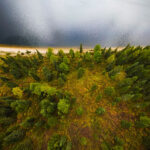 Understanding the Causes of Spider Web-Like Growths in Succulents
Understanding the Causes of Spider Web-Like Growths in SucculentsWhat are white-dotted succulents?
White-dotted succulents, also known as Haworthia fasciata or zebra plants, are popular for their striking appearance. These succulents feature thick, dark green leaves with white stripes or dots, giving them a visually appealing zebra-like pattern.
Potential poisonous effects on pets
While white-dotted succulents may add an aesthetic touch to your home, it's important to note that they can be toxic to pets if ingested. The exact toxic compounds present in these plants are not well-documented, making it difficult to determine the severity of the potential effects. However, it's better to err on the side of caution and prevent any chances of harm to your furry companions.
Signs of poisoning in pets
If your pet accidentally consumes parts of a white-dotted succulent, they may exhibit certain symptoms of poisoning. Keep a close eye on your pet for the following signs:
- Vomiting
- Diarrhea
- Lethargy
- Loss of appetite
- Excessive drooling
If you notice any of these symptoms, it's crucial to seek immediate veterinary care to ensure the well-being of your pet.
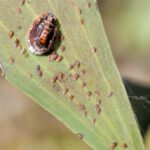 Effective Solutions for Eliminating Mealy Bugs on Succulent Plants
Effective Solutions for Eliminating Mealy Bugs on Succulent PlantsProviding alternatives
If you're a plant enthusiast and want to create a pet-friendly environment in your home, it's advisable to replace white-dotted succulents with safe alternatives. Some pet-friendly plants that can be great alternatives include:
- Spider Plant (Chlorophytum comosum)
- Areca Palm (Dypsis lutescens)
- Boston Fern (Nephrolepis exaltata)
- Money Plant (Epipremnum aureum)
- Calathea (Calathea spp.)
These plants not only add a touch of greenery to your space but are also non-toxic to pets, providing a safe and enjoyable environment for both you and your furry friends.
Conclusion
As responsible pet owners, it's crucial to be aware of the potential dangers that certain plants can pose to our pets. While white-dotted succulents may be visually appealing, their potential toxic effects on pets make them a risky choice for pet-friendly homes. By opting for safe alternatives, you can create a beautiful and pet-friendly environment that ensures the well-being of your furry companions.
Keep a close eye on your pets when they are outside to prevent them from eating white-dotted succulents
Potential Risks
White-dotted succulents may seem harmless, but they can pose potential risks to your furry friends. These plants contain toxic substances that can have adverse effects if ingested by pets. It is essential to understand the potential dangers they present and take necessary precautions to keep your pets safe.
 Understanding the Factors behind Succulent Death Blooms
Understanding the Factors behind Succulent Death BloomsToxicity Symptoms
If your pet has consumed white-dotted succulents, it is crucial to be aware of the common symptoms of toxicity. These may include vomiting, diarrhea, excessive drooling, loss of appetite, lethargy, and in severe cases, tremors or seizures. If you notice any of these symptoms, it is vital to seek immediate veterinary attention.
Preventive Measures
To ensure the safety of your pets, here are some preventive measures you can take:
- Keep white-dotted succulents out of reach: Place these plants in areas where your pets cannot access them, such as high shelves or hanging baskets.
- Supervise outdoor activities: When your pets are outside, closely monitor them to prevent them from nibbling on any potentially harmful plants.
- Provide alternative safe plants: Offer pet-friendly plants that are non-toxic to pets as an alternative, so they are less likely to be tempted by white-dotted succulents.
Emergency Actions
In case of accidental ingestion, it is crucial to know the steps to take:
- Remove any remaining plant material: If you catch your pet in the act, carefully remove any plant material from their mouth and rinse their mouth with water if possible.
- Contact your veterinarian: Immediately call your veterinarian and provide them with as much information as possible, including the specific succulent species and the symptoms your pet is experiencing.
- Follow professional advice: Your veterinarian will guide you on the appropriate steps to take, which may include inducing vomiting or other necessary treatments.
Remember, prevention is always better than cure. By being aware of the potential risks and taking necessary precautions, you can ensure your pets remain safe and healthy.
Consider using barriers or fencing to keep pets away from areas where white-dotted succulents are present
White-Dotted Succulents: Potential Poisonous Effects on Pets
When it comes to creating a pet-friendly environment at home, it's important to be aware of the potential dangers that certain plants can pose to our furry friends. One such group of plants that pet owners should pay attention to are white-dotted succulents. While these plants may be visually appealing, they can have harmful effects on our beloved pets if ingested. To ensure the safety and well-being of our furry companions, it is crucial to take necessary precautions to prevent any accidental encounters with these toxic plants.
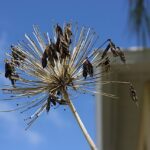 Can a Death Bloom Succulent Be Saved or is it Too Late?
Can a Death Bloom Succulent Be Saved or is it Too Late?Understanding the Toxicity
White-dotted succulents, also known as Sempervivum arachnoideum, are small, clump-forming plants that are characterized by their unique appearance. With tiny white hairs covering their leaves, these succulents have a distinctive dotted pattern that adds to their allure. However, what many pet owners may not know is that these adorable plants can be toxic to our pets.
The toxicity of white-dotted succulents lies in their sap, which contains toxic compounds that can cause adverse reactions if ingested by pets. These compounds can irritate the digestive system, leading to symptoms such as vomiting, diarrhea, and abdominal pain. In more severe cases, pets may exhibit signs of lethargy, weakness, or even seizures.
Preventing Accidental Encounters
To ensure the safety of our pets, it is essential to take proactive measures to prevent accidental encounters with white-dotted succulents. Consider using barriers or fencing to keep pets away from areas where these plants are present. This will help create a physical barrier and limit access, reducing the risk of ingestion.
Additionally, educating yourself about the appearance and characteristics of white-dotted succulents can help you identify and remove them from your pet's environment. Regularly inspect your indoor and outdoor spaces for any signs of these plants and promptly remove them if found.
Seeking Veterinary Assistance
 Understanding the Cause: Why is My Succulent's Base Turning White?
Understanding the Cause: Why is My Succulent's Base Turning White?If you suspect that your pet has ingested a white-dotted succulent or is exhibiting any unusual symptoms, it is crucial to seek immediate veterinary assistance. Do not try to induce vomiting or administer any home remedies without professional guidance, as this can potentially worsen the situation. A veterinarian will be able to assess your pet's condition, provide the necessary treatment, and offer guidance on further steps to ensure a full recovery.
Remember, prevention is key when it comes to protecting our pets from the potential dangers of white-dotted succulents. By being aware of the toxicity, implementing preventive measures, and seeking veterinary assistance when needed, we can keep our furry friends safe and healthy.
Train your pets to avoid white-dotted succulents through positive reinforcement techniques
White-dotted succulents can add a touch of elegance and beauty to any indoor or outdoor space. With their unique patterns and textures, these plants have become increasingly popular among gardening enthusiasts. However, it is important to be aware of the potential risks they pose to our furry friends.
While these succulents may be visually appealing, some species contain toxic compounds that can be harmful to pets if ingested. The white dots or spots on their leaves often indicate the presence of toxic substances, serving as a warning sign for potential danger.
Identifying and understanding poisonous white-dotted succulents
It is crucial for pet owners to familiarize themselves with the different types of white-dotted succulents that can be harmful to their beloved companions. Here are a few examples of commonly found species:
- Euphorbia lactea: Also known as the "Dragon Bones," this succulent contains a milky sap that can cause severe irritation and gastrointestinal distress if ingested by pets.
- Kalanchoe tomentosa: Commonly referred to as the "Panda Plant," this succulent can lead to vomiting, diarrhea, and abnormal heart rhythms in pets.
- Echeveria elegans: This popular succulent, also known as the "Mexican Snowball," can cause gastrointestinal upset and skin irritation in pets.
It is essential to consult with a local gardening expert or do thorough research to identify other potentially toxic white-dotted succulents that may be present in your home or garden.
Positive reinforcement techniques to prevent pet ingestion
Training your pets to avoid white-dotted succulents can help keep them safe from potential harm. Positive reinforcement techniques are an effective way to teach your pets which plants are off-limits. Here are some tips:
- Create a designated pet-friendly area: Designate a specific area in your home or garden where your pets are allowed to freely explore without the risk of encountering toxic plants. Fill this area with pet-friendly plants and toys to redirect their attention.
- Use verbal cues and rewards: Teach your pets commands such as "Leave it" or "Stay away" when they approach white-dotted succulents. Reward them with treats, praise, or playtime when they listen and avoid the plants.
- Provide alternative chewing options: Pets often chew on plants out of boredom or to alleviate teething discomfort. Offer them safe and appropriate chew toys to redirect their chewing behavior.
- Supervise outdoor activities: When allowing your pets outdoors, supervise their playtime to ensure they do not come into contact with toxic plants. Keep them on a leash or within a securely fenced area to prevent accidental ingestion.
Remember that consistency, patience, and positive reinforcement are key when training your pets. With time and effort, you can successfully teach them to avoid white-dotted succulents and create a safe environment for both your plants and furry companions.
Stay vigilant and monitor your pets for any signs of poisoning if they have been exposed to white-dotted succulents
White-dotted succulents are undoubtedly beautiful additions to any garden or indoor space. However, it is crucial to be aware of the potential poisonous effects they can have on our beloved pets. While these plants may enhance the aesthetic appeal of our surroundings, they can pose a significant risk to the health and well-being of our furry friends.
Identifying White-Dotted Succulents
If you are unfamiliar with white-dotted succulents, it's important to know how to identify them. These plants are characterized by their distinctive white spots or dots on their leaves. Common white-dotted succulents include Euphorbia lactea (also known as the Mottled Spurge), Euphorbia obesa (Baseball Plant), and Euphorbia leuconeura (Madagascar Jewel).
Potential Poisonous Effects on Pets
While white-dotted succulents may be visually appealing, they contain toxic substances that can have harmful effects on our pets. The milky sap found within these plants contains toxic compounds such as diterpene esters, which can cause a range of symptoms in animals if ingested or if the sap comes into contact with their skin or eyes.
Some common symptoms of white-dotted succulent poisoning in pets include:
- Gastrointestinal Distress: Vomiting, diarrhea, and loss of appetite.
- Oral Irritation: Excessive drooling, pawing at the mouth, and difficulty swallowing.
- Skin Irritation: Redness, swelling, and itching.
- Eye Irritation: Red and watery eyes, sensitivity to light, and possible corneal damage.
- Systemic Effects: In severe cases or with prolonged exposure, pets may experience weakness, lethargy, tremors, seizures, and even organ failure.
Prevention and Safety Measures
To ensure the safety of your pets, it is essential to take preventive measures when it comes to white-dotted succulents:
- Keep them out of reach: Place the white-dotted succulents in areas where your pets cannot access them, such as high shelves or hanging baskets.
- Supervise outdoor activities: If you have these plants in your garden, closely monitor your pets when they are outside to prevent them from nibbling on the leaves.
- Train your pets: Teach your pets not to chew or play with plants by using positive reinforcement and redirection techniques.
- Consult your veterinarian: If you suspect your pet has ingested or come into contact with a white-dotted succulent, seek immediate veterinary attention. Do not induce vomiting without professional guidance.
Remember, prevention is key when it comes to keeping our pets safe from potential hazards. By being proactive and vigilant, we can ensure that our furry companions stay away from potentially toxic plants like white-dotted succulents.
Frequently Asked Questions
1. Are white-dotted succulents toxic to pets?
Yes, some white-dotted succulents can be toxic to pets if ingested.
2. What are the potential poisonous effects of white-dotted succulents on pets?
Common symptoms of toxicity in pets include vomiting, diarrhea, drooling, lethargy, and loss of appetite.
3. Which white-dotted succulents are known to be toxic to pets?
White-dotted succulents such as Kalanchoe pinnata (also known as "Mother of Thousands") and Euphorbia milii (Crown of Thorns) are known to be toxic to pets.
4. How can I protect my pets from the potential poisonous effects of white-dotted succulents?
Keep white-dotted succulents out of reach of pets, and if you suspect your pet has ingested any, seek immediate veterinary assistance.
If you want to read more articles similar to White-Dotted Succulents: Potential Poisonous Effects on Pets, you can visit the Pests and Diseases category.

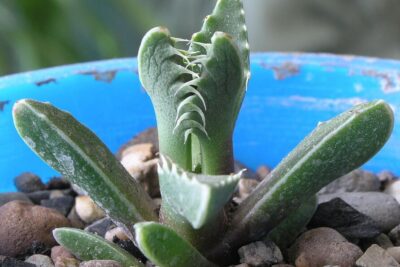

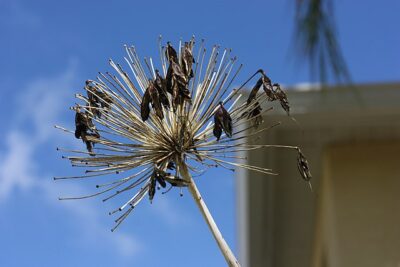
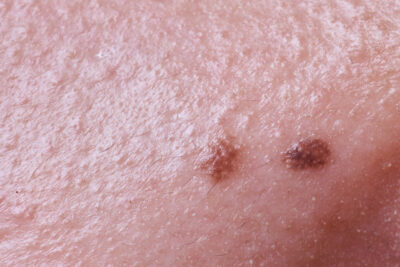
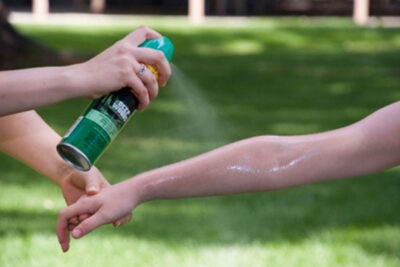
You Must Read